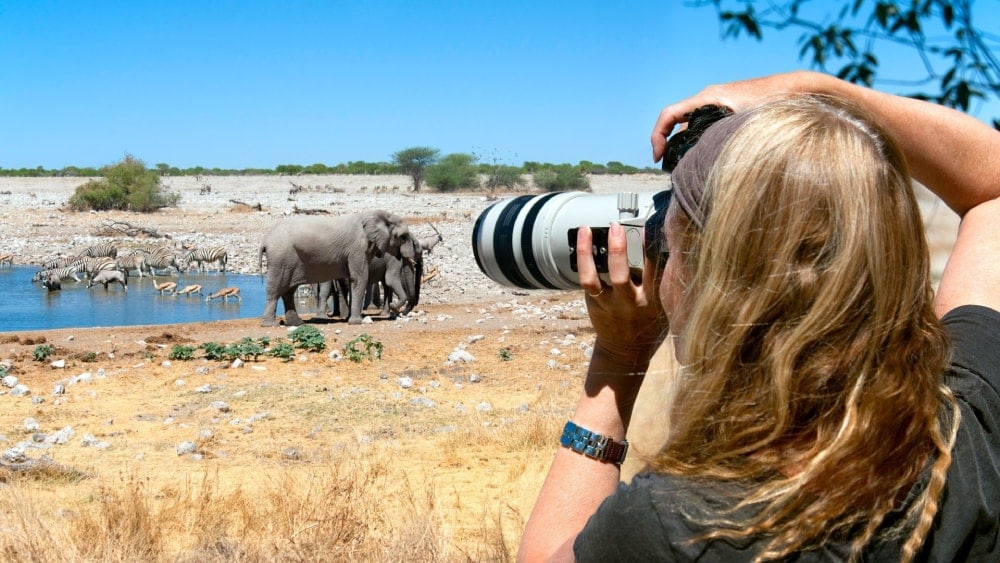Photographic safaris aren’t just an amazing way to take in and enjoy some of the most incredible, diverse, and fascinating wildlife and landscapes. They’re also an opportunity to be creative, make lasting memories while you do it, and take a part of your adventure home with you.

The beauty of an African photographic safari is that it isn’t only an amazing adventure; it’s also a chance to create something amazing of your own. Photography is an incredibly enriching art that hinges on the eye of the beholder, and there’s perhaps no greater place on earth to photograph than this incredible continent. These safari photography tips aim to help inform you and inspire you as you begin your journey.
Equipping Yourself
Firstly, it can be crucial to have the right equipment for the job. For many photographers, an SLR, or single-reflex lens camera, is the gold standard. Even in the digital age, many enthusiasts swear by their DSLR or digital single-reflex lens camera. These cameras enable the photographer to see exactly the same scene as they will capture in the photograph. Additionally, you’ll want to carry plenty of storage space with you — whether that’s rolls of film or a high-capacity memory card. Finally, a tripod is often essential for photographers — allowing you to gain stability, the likes of which are difficult to emulate with even the steadiest of hands.
Planning
Another often vital consideration when embarking on a photography tour— what would you like to photograph? If you’re particularly fascinated by the intellect, majesty, and beauty of elephants, for example, it may be important to you to plan a photographic safari adventure somewhere like Botswana’s Chobe National Park or perhaps The Okavango Delta. Still, perhaps both!

Perhaps you’re more interested in the incredible experience of the great migration of wildebeests in the Serengeti, in which case, you might be interested in visiting Tanzania to get the perfect shot.
Even if you’re more interested in landscape photography than wildlife photography, where you visit can be crucial to your adventure. If you’re looking for incredibly majestic views of meandering rivers cutting through the horizon or roaring waterfalls that project immense power, for example, you may be interested in Victoria Falls in Zambia.
The Perfect Shot
Finally, it’s important to understand some photography essentials. Composition is an often crucial one. Consider not only what you center your camera on but everything that you capture in the picture. Many photographers rely on the well-established ‘rule of thirds’, in which you divide the shot by thirds both horizontally and vertically — giving you a grid with four intersection points.

At these points, you can focus on objects that you wish to draw the viewer’s attention to. Another important consideration of photography is the focal point, where the photograph is meant to focus. Using your lens, it’s important to bring into focus that which you aim to highlight.
Getting Started
After getting the right equipment — and equipping yourself mentally with the basics of wildlife and landscape photography, as well as where you might like to visit — it’s time to get started. Planning your perfect adventure is only a step away! Don’t hesitate to get in touch. At Discover Africa Safaris, we can help you choose from an incredible range of African photography safari experiences in some of the most incredibly beautiful destinations on Earth. Reach out and enquire today.
Author: Johnieka Holtzhausen
Published: 29 November 2023
Last Update: 30 January 2024